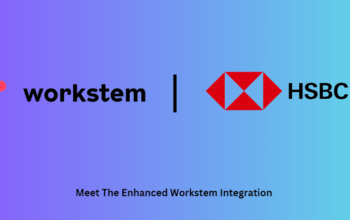The population ageing of Hong Kong continues, and it is expected that the populations will continue getting older in the future. According to data released by the Hong Kong Census and Statistics Department in 2018, the estimated population of elderly people aged 65 years and above has risen 57% from 1.16 million in 2016 (17% of the total population) to 1.82 million (25%) in 2026. By 2036, one out of every three people will be an elderly person. It is estimated that in 2066, every 1.4 people in Hong Kong will take care of one elderly person.
Generally speaking, the elderly have little income after retirement, and they need more medical care. The Hong Kong government launched mandatory provident fund (MPF) schemes in 2000. This is an employment-based retirement protection system. Withdrawal of accrued benefits derived from mandatory contributions is only allowed when scheme members reach the age of 65. This not only provides a guarantee for employees’ retirement, but also relieves the pressure on young people to take care of the elderly.
Requirement of Contributions
According to MPFA, employees and employers who are covered by the MPF System are each required to make regular mandatory contributions calculated at 5% of the employee’s relevant income to an MPF scheme.
For a monthly-paid employee, if he’s relevant income is less than HK$7,100, he does not need to make mandatory contributions, but the amount of mandatory contributions payable by employer is relevant income x 5%; if he’s relevant income is more than HK$30,000, the amount of mandatory contributions payable by employer and employee is HK$1,500.
Recommendation💡: The MPF function of the Human Resource Management System in Workstem can automatically check whether an employee needs to make contributions and calculate the amount of contributions payable by employers and employees.
Types of MPF Schemes
- Master Trust Schemes
This is the most common and popular type of MPF scheme, open to the employees of participating employers, self-employed persons and persons with accrued benefits to be transferred from other schemes.
Characteristics: by pooling together contributions from various employers and their employees in small enterprises, master trust schemes have a high degree of efficiency in terms of scheme administration due to economies of scale. Therefore, this scheme is suitable for SMEs.
- Employer-sponsored Schemes
Membership in this type of scheme is limited to the employees of a single employer and its associated companies.
Characteristics: there is only one employer-sponsored scheme because of its restriction in membership, it is only cost-effective to run an employer-sponsored scheme if the number of employees is large.
- Industry Schemes
The schemes specially established for employees of the catering and construction industries, particularly casual employees (i.e. workers employed on a day-to-day basis or for a fixed period of less than 60 days). Most of them are daily-rated, weekly-rated, and semi-monthly-rated employees.
Characteristics: casual employees do not need to change schemes when they change jobs within these two industries, so long as their previous and new employers have registered with the same Industry Scheme.
Except for exempt persons, an employer should enrol both full-time and part-time employees who are at least 18 but under 65 years of age in an MPF scheme within the first 60 days of employment. However, it is not applied for the casual employees in the construction industry or catering industry.
Who needs to enrol in an MPF scheme?
Employers in all industries should enrol their regular employees, not matter is full-time or parttime, (i.e. employees who are at least 18 but under 65 years of age and have been employed for a continuous period of 60 days or more) in an MPF scheme within the first 60 days(calendar days) of employment.
Casual employees are those who are at least 18 but under 65 years of age and who are employed in either of the construction industry or catering on a day-to-day basis or for a fixed period of less than 60 days. Employers in either of the two industries should enrol their casual employees in an MPF scheme within the first 10 days of employment, regardless of the length of the employment period.
Contribution day
Generally, for monthly-paid regular employees, the contribution day is the 10th day of each month. If the contribution day is a Saturday, a public holiday, a gale warning day or a black rainstorm warning day, the contribution day is extended to the next following day which is not a Saturday, a public holiday, a gale warning day or a black rainstorm warning day.
Recommendation💡: Workstem will automatically remind you to enrol your employees in an MPF scheme!
Example: Tim is a 24-year-old interior designer who joined the company on April 15, 2019. The 60th day of Tim’s employment falls on June 13. The 10th day of the following month is July 10, so employers are required to make mandatory contributions on or before July 10.
Not every new employee needs to make mandatory contributions! This is because new employees can enjoy “Contribution Holiday”.
What is a Contribution Holiday?
In the case of regular employees, the employer’s mandatory contributions shall be payable from the first day of employment. However, the employee enjoys an initial contribution holiday and is not required to make employee’s mandatory contributions for the first 30 days of employment and
| (i) the first incomplete payroll period that immediately follows the 30-day period (if the employee’s payroll period is monthly or shorter than monthly); or |
| (ii) the calendar month in which the 30th day of employment falls (if the employee’s payroll period is longer than monthly). |
An employee is not required to make contributions for the first 30 days of employment and the first incomplete payroll period. The complete payroll period refers to the 1st to 30th/31st of the month.
It seems a little complicated. Take a look at the following example and you will understand.
Example:
Macy is a 26-year-old full-time engineer. She joined the company on April 15, 2019 with a monthly salary of HK$18,000.
Scenario 1:
Macy joined the company on June 13, 2019. July 12 is the first 30 days of employment. However, the payroll period from July 12 to July 31 is incomplete, Macy will start making contributions in August. And June 13 to July 31 is the contribution holiday.
| 6.13 – 6.30 | 7.1 – 7.31 | 8.1 – 8.30 | |
| Macy | $0 | $0 | $900 |
| Employer | $540* | $900 | $900 |
*The salary in June is HK$10,800
Scenario 2:
Macy joined the company on September 1, 2019, and September 30 is the first 30 days of employment. Therefore, October is the complete payroll period. Macy needs to make mandatory contributions in October.
| 9.1 – 9.30 | 10.1 – 10.31 | |
| Macy | $0 | $900 |
| Employer | $900 | $900 |
Scenario 3:
Macy joined the company on August 2, 2019, and August 31 is the first 30 days of employment. Therefore, September is the complete payroll period. Macy needs to make mandatory contributions in September.
| 8.2 – 8.31 | 9.1 – 9.30 | |
| Macy | $0 | $900 |
| Employer | $900 | $900 |
Scenario 4:
Macy resigned after working for several years. Her last day was September 16, 2019. The employer should notify the trustee and make the last contribution of HK$900 on or before October 10, 2019.
Scenario 5:
Macy joined the company on September 3, 2019, resigned on October 31, and was employed for 59 days. So neither the employer nor Macy need to make contributions.
Employer’s offences and penalties
It is an offence for employers to fail to enrol their employees in an MPF scheme by the deadline. Upon conviction, an offender is liable to a maximum penalty of a fine of HK$350,000 and imprisonment for three years.
If the employer does not notify the trustee of an employee’s last day of employment, either by a written notice or via a remittance statement, is liable to a financial penalty of HK$5,000 for the first failure and up to HK$20,000 for subsequent failures.
Now we know that MPF calculation and contributions are quite difficult, especially for new joiners, employers should remember the first 60 days, the first 30 days, and the (incomplete) payroll period of employee’s employment, and the monthly contribution date. In addition, employers must also provide each employee with a monthly pay-record showing the required details, including the amount of the employee’s relevant income and the amounts of both employer’s and employee’s contributions, within seven working days after the mandatory contributions are made.
Workstem is a one-stop human resources management system that includes MPF files, contribution records, report exports, etc. The system automatically calculates mandatory/voluntary contributions of both employers and employees, and will auto-fill retirement dates based on the employee’s joined date to help you handle your monthly MPF work in order.
Frequently Asked Questions
- Can an employee not join MPF?
According to MPFA, employers in all industries should enrol their regular employees (i.e. employees who are at least 18 but under 65 years of age and have been employed for a continuous period of 60 days or more) in an MPF scheme within the first 60 days of employment, unless they are exempt persons*. This is not applied for a casual employee who is in the construction industry or catering industry.
- Can employees choose trustees and schemes by themselves?
No, they can’t. This is chosen by the employer, and employees can make their own choice of funds for their investment portfolio under the schemes.
- Employees asked about how to choose the investment portfolio?
Employers cannot give any suggestions on it, and employees themselves should study the documents with the funds available in the scheme. If employees can’t make any choice, they can call the MPFA hotline during office hours from 8:45am to 5:45pm, Monday to Friday (except public holidays): (852) 2918 0102.
- If an employee has part-time jobs in different companies, should the employer arrange MPF enrolment for him?
As long as employees have been employed for 60 days or more, employers are required to enrol them into an MPF scheme and make contributions.
- Can employees have an ealry withdrawal of MPF? Is the age of 65 a must?
Once employees have reached the age of 65, you can withdraw your accrued benefits. However, there are specific circumstances where accrued benefits may be withdrawn before they reach age 65: 1) early retirement, 2) permanent departure from Hong Kong, 3) total incapacity, 4) terminal illness, 5) small balance, 6) death. For further information, please refer to http://www.mpfa.org.hk/tch/main/employee/early_withdrawal_of_benefits.jsp
- I am the owner of a restaurant, and familiar with a casual worker who always comes to help us during the peak hours. In this case, do I need to arrange MPF enrolment for him?
As long as he got the salary from you, and there is an employment relationship between you and your employees, you are still required to enrol him in an MPF scheme. Unless he doesn’t receive any payment from you, and you don’t need to arrange the MPF enrolment.
*The following are exempt persons who are not required to join an MPF scheme:
- employees and self-employed persons who have attained 64 years of age on the date the relevant provision in the Mandatory Provident Fund Schemes Ordinance is implemented, i.e. 1 Dec 2000;
- domestic employees;
- self-employed hawkers;
- people covered by statutory pension or provident fund schemes, such as civil servants and subsidized or grant school teachers;
- members of occupational retirement schemes which are granted exemption certificates;
- people from overseas who enter Hong Kong for employment or self-employment for not more than 13 months;
- people from overseas who enter Hong Kong for employment or self-employment and who are covered by overseas retirement schemes; and
- employees of the European Union Office of the European Commission in Hong Kong.
Workstem, a one-stop human resource management system, includes MPF plan files, contribution records, report export and other aspects. The system will automatically calculate the mandatory/voluntary contributions of employers and employees, and calculate the retirement time based on the employee’s entry time, helping you to handle the monthly MPF work in an orderly manner.
Read More:
Should Part-time Employees Also Enroll in the MPF Scheme?
The Most Used Hong Kong MPF Calculation Formula
How to Calculate the Amount of MPF Contributions for Non-monthly-paid Employees?




供款最全指南!.png)

![[418 Guide] Ordinance 418 And Continuous Contract](https://www.workstem.com/wp-content/uploads/2023/08/Untitled-design-min-350x220.png)
